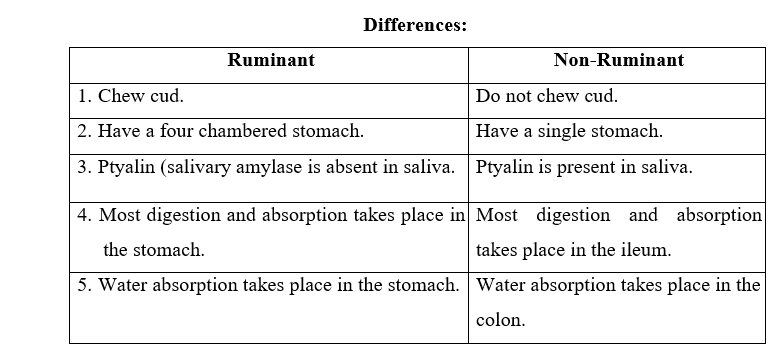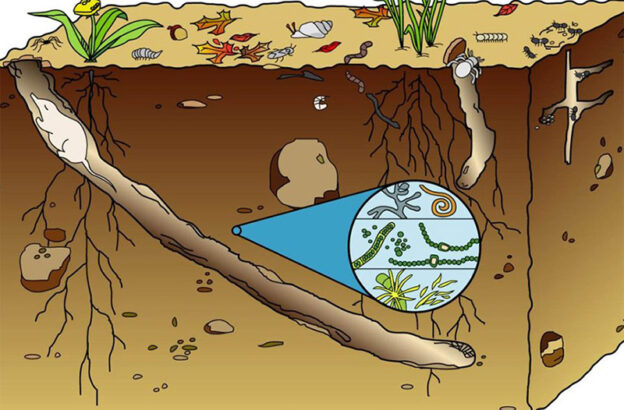LESSON 9
9.1 ASSIMILATION
This is the process by which absorbed food materials are built up into complex constituents of the organism.
Assimilation is also the incorporation/utilization of the products of digestion into the body’s metabolism for life processes e.g. respiration, growth and repair and digestion.
Assimilation and metabolism for:
- Carbohydrates: (Glucose)
Glucose is mainly broken down in the process of respiration to provide energy for the body’s metabolic process.
Excess glucose is stored as Glycogen (animal starch); however, the liver has the ability to re-covert back the glycogen to Glucose in periods of starvation.
- Proteins
Amino acids are used in the synthesis of new proteins especially regulators like enzymes, and hormones.
Some Amino acids are used in body growth and repair and in absence of Glucose and Fats, Amino acids can instead be used in the process of respiration to produce energy.
Excess Amino acids are not stored in the liver, they are instead deaminated by the liver (removal of the Amino group) to form urea which is then passed on to the kidneys and excreted in urine.
Deamination is the removal of the amino group from Amino acids to form urea (which is a toxic waste product).
- Lipids (Fatty acids & Glycerol)
Fatty acids and glycerol in the absence of Glucose can be oxidized to release energy. Fats produce much more energy compared to glucose considering the same amount by mass.
Fats are used for body insulation i.e. they prevent heat loss from the body which is an important temperature regulatory mechanism.
Lipids are used in the formation of structures like the cell membrane.
Excess fats and Glycerol are stored under the skin in the adipose tissue.
9.2 THE LIVER
This is the largest organ in the body and it carries out several functions within the body. The liver is the body’s metabolic center as it receives all nutrient supplies from the blood through the hepatic portal vein.
9.3 Functions of the Liver
- Assimilation and metabolism of carbohydrates.
- Assimilation and metabolism of proteins. iii) Assimilation and metabolism of lipids.
- Production of heat helps in temperature regulation. Since there are many metabolic reactions occurring in the liver, there is a lot of heat given off-and this heat is distributed throughout the body and it plays a great role in temperature regulation.
- Manufacture of plasma proteins in clotting of blood. The liver helps to manufacture proteins like Albumin, Globulin and fibrinogen which are important in body process like clotting of blood (stopping bleeding).
- Production of bile which emulsification lipids. The liver produces bile which is important in the process of digestion i.e. in the emulsification of lipids.
- Storage of iron and other minerals. The liver destroys worn out blood cells and removes the ion group from them which it stores for future formation of other blood cells.
- Formation of red blood cells with the iron yet from the above process, coupled with vitamin B12. New red blood cells can formed in the bone narrow using these raw materials.
- Storage of blood. Blood vessels in the liver can expand and contract to great extents such that the amount of blood in the liver can vary from 300cm3 – 1500cm3 an increase of five times thus the liver can be a blood reservoir.
- The liver converts toxic substances to harmless substances by altering their chemical structure and later sends them to the excretory organs for expulsion e.g. it converts Ammonia to urea which is then expelled by the kidneys.
- Elimination of sex hormones. Testosterone and oestrogen are sent to the kidneys by the liver for excretion.
9.4 DIGESTION IN HERBIVORES
Animals that depend on plant materials (herbivores) like leaves, wood, grass are faced with a problem of digesting the cellulose that make up the plant walls. It is necessary to break through the cellulose to release the inside cell nutrients which are required by the herbivores.
These herbivores cannot secret the enzyme which digests cellulose because they cannot produce cellulase. However, some protozoans and bacteria can produce the enzyme cellulase.
Fortunately, some of these micro-organisms can live in the guts of herbivores in a harmless beneficial nutritional association called symbiosis.
9.5 Digestion of cellulose in ruminants Ruminants are mammals which chew cud.
Cud is imperfectly / incompletely chewed grass or plant materials that are taken into the stomach (rumen) and later returned back to the mouth for further chewing through a process called regurgitation.
Ruminants have a complicated stomach made up of four chambers namely;
- Rumen
- Reticulum
- Omasum
- Abomasum

In the mouth, the saliva does not contain any enzyme. So only mastication (chewing) and softening of food takes place.
The food moves through the oesophagus by peristalsis (wave like motion).
- Rumen:
This is the largest component (chamber) of the stomach. It is used for storing food as the animal feeds. Fermentation and digestion of cellulose by bacteria and protozoa occurs in the rumen.
Fermentation is the breakdown of food by bacteria in the absence of oxygen. During fermentation, there is a release of a weak acid called lactic acid.
Food then moves from the rumen to the reticulum and from the reticulum back to the rumen where regurgitation takes place (This is where food is returned to the mouth bit by bit for further chewing and that completes the first cycle.
- Reticulum:
Bacterial action continues here and also food is sieved where finely ground food materials are separated from the coarse materials which are then retained. These coarse materials may include small stories, small pieces of wood, etc.
- Omasum:
This consists of parallel leaf like compartment with rough surfaces.
Food is ground finely here and water absorption also takes place.
- Abomasum (True stomach)
Here, enzymatic digestion of proteins takes place like in human and digestion beyond this point also proceeds like in humans and that is why we refer it as a true stomach, you can continue in the same line in humans e.g. colon.
9.7 Digestion of cellulose in termites
Termites eat wood, dry leaves and other plant materials which contain cellulose. The digestion of cellulose also takes place in the gut (stomach) with the help of protozoans which lives symbiotically in the termite’s gut.
These protozoa have the ability to produce the enzyme cellulase which digests cellulose.
9.8 COMPARISION BETWEEN RUMINANT AND NON RUMINANT DIGESTION
Similarities:
- In both, young animals have a single stomach where digestion takes place.
- The final digestion of proteins and carbohydrates takes place in the small intestines.


